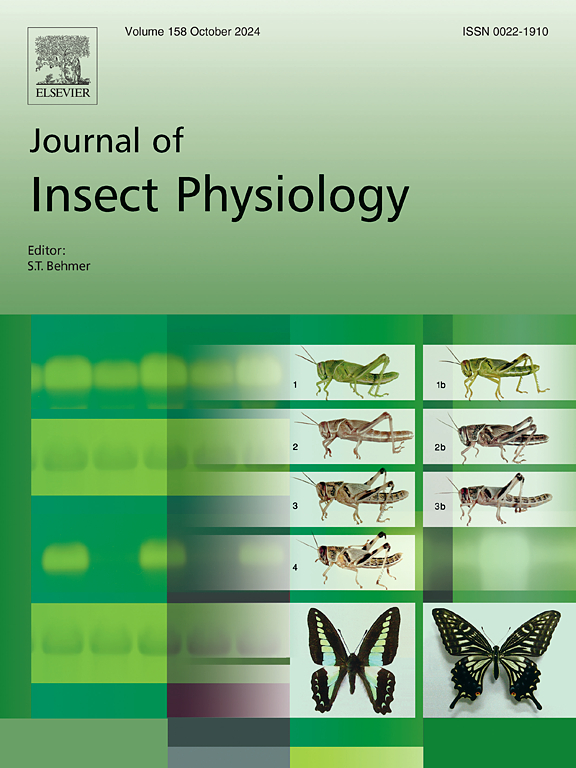基于rnai的节肢动物病虫害防治趋势与热点:综合文献计量学分析
IF 2.3
2区 农林科学
Q1 ENTOMOLOGY
引用次数: 0
摘要
基于RNA干扰(RNA interference, RNAi)技术的害虫防治具有环境风险小、可降解、选择性好等优点,已成为害虫防治的前沿和极具发展前景的方法。本研究对基于rnai的害虫防治进行了文献计量学分析,评估了Web of Science Core Collection (WoSCC)和PubMed在该领域的全球科学产出。从2007年首个适合野外应用的基于rnai的节肢动物害虫防治策略发表到2024年8月,共发现722篇英文研究论文,主要集中在投喂、浸泡和喷洒等具有较高野外应用潜力的dsRNA传递方式。通过注射dsRNA检测基因功能和潜在靶点的文章被排除在外。722篇符合条件的文章由来自50个国家563个机构的3112位作者发表在132种期刊上。在这17年中,基于rnai的害虫防治的出版物数量呈现出加速增长的趋势。发表文章最多的是《害虫管理科学》,其次是《农药生物化学与生理学》《科学报告》。中国发表的文章最多,其次是美国。然而,中国在开发这一领域的商业产品方面明显落后于美国。基于rnai的害虫防治研究热点包括烟粉虱、棉铃虫、棉蚜、十二细粉虱和virgifera等。常被研究的靶基因包括vATPaseA、CHS1、SNF7、EcR和β-actin等。近年来,各种先进的dsRNA递送技术已被开发并应用于基于rnai的害虫防治系统中,包括纳米颗粒递送、共生体介导和植物介导递送。本研究首次采用文献计量学方法进行综合分析,旨在探讨基于rnai的害虫防治的前沿热点和研究趋势,为该领域的研究人员和开发人员提供有价值的参考。本文章由计算机程序翻译,如有差异,请以英文原文为准。

Trends and emerging hotspots in RNAi-based arthropod pest control: A comprehensive bibliometric analysis
RNA interference (RNAi)-based pest control has emerged as a cutting-edge and highly promising approach in pest control, especially for insect pests, due to its advantages of reduced environmental risk, degradability, and good selectivity. This study provides a bibliometric analysis of RNAi-based pest control, evaluating the global scientific output in this field from the Web of Science Core Collection (WoSCC) and PubMed. From 2007, when the first RNAi-based Arthropod pest control strategy suited for field application was published, to August 2024, 722 English research articles were identified, focusing only on dsRNA delivery modes including feeding, soaking, and spraying, which hold high potential for field application. Articles examining gene function and potential targets by dsRNA injection were excluded. The 722 eligible articles were published in 132 journals by 3112 authors from 563 institutions in fifty countries. Over these 17 years, the number of publications on RNAi-based pest control has shown a trend of accelerating growth. PEST MANAGEMENT SCIENCE published the most articles, followed by PESTICIDE BIOCHEMISTRY AND PHYSIOLOGY, SCIENTIFIC REPORTS. China produced most articles, followed by the United States. However, China is significantly behind the United States in developing commercial products in this field. Hot target insects in RNAi-based pest control research included Bemisia tabaci, Helicoverpa armigera, Aphis gossypii Glover, Leptinotarsa decemlineata, and Diabrotica virgifera virgifera. Frequently studied target genes included vATPaseA, CHS1, SNF7, EcR and β-actin, ect. In recent years, various advanced technologies for dsRNA delivery have been developed and utilized in RNAi-based pest control system, including nanoparticle-enabled, symbiont-mediated, and plant-mediated deliveries. This study represents the first comprehensive analysis based on bibliometric methods, aiming to investigate the forefront hotspots and research trends of RNAi-based pest control, providing valuable references for researchers and developers in this field.
求助全文
通过发布文献求助,成功后即可免费获取论文全文。
去求助
来源期刊

Journal of insect physiology
生物-昆虫学
CiteScore
4.50
自引率
4.50%
发文量
77
审稿时长
57 days
期刊介绍:
All aspects of insect physiology are published in this journal which will also accept papers on the physiology of other arthropods, if the referees consider the work to be of general interest. The coverage includes endocrinology (in relation to moulting, reproduction and metabolism), pheromones, neurobiology (cellular, integrative and developmental), physiological pharmacology, nutrition (food selection, digestion and absorption), homeostasis, excretion, reproduction and behaviour. Papers covering functional genomics and molecular approaches to physiological problems will also be included. Communications on structure and applied entomology can be published if the subject matter has an explicit bearing on the physiology of arthropods. Review articles and novel method papers are also welcomed.
 求助内容:
求助内容: 应助结果提醒方式:
应助结果提醒方式:


